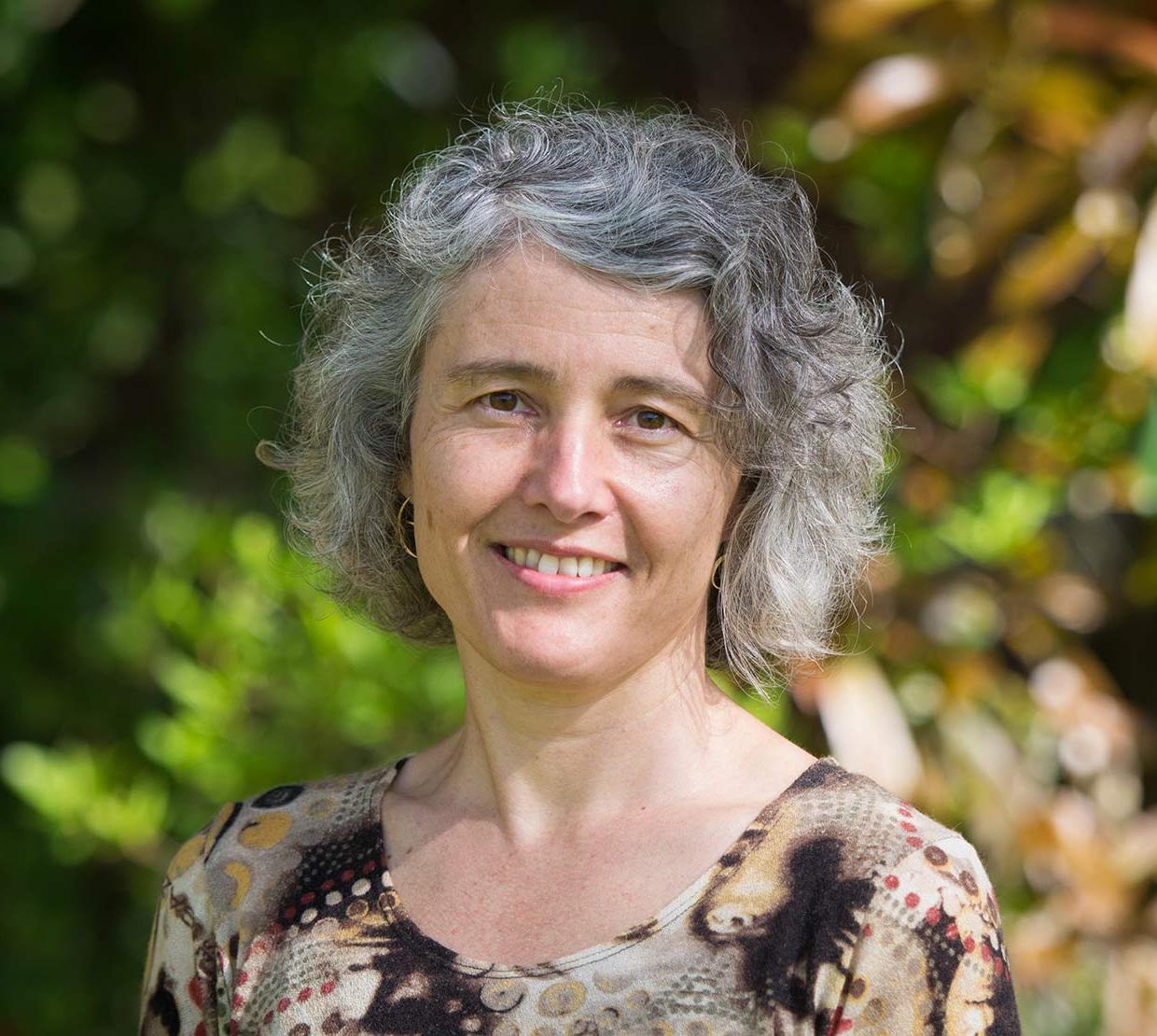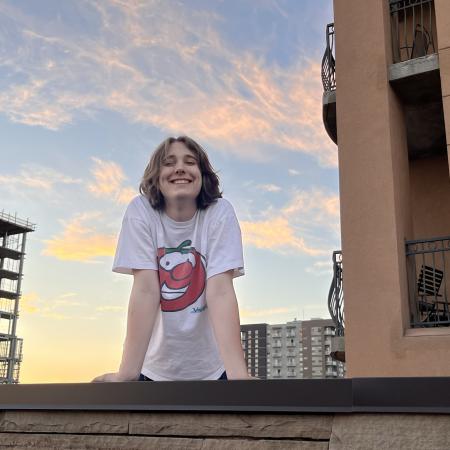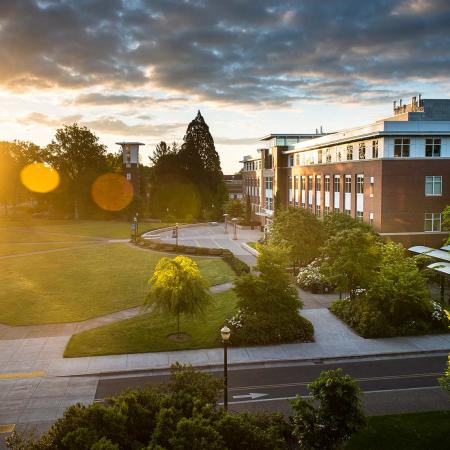What do a coffee cup and a donut have in common? It’s not a trick question, and there’s no punch line. The answer? Other than the fact that one might be dunked in the other occasionally, both have one hole.
It’s a really simplified explanation of the kinds of questions Christine Escher, associate professor of mathematics, asks in her basic research in algebraic topology and differential geometry. While at the higher levels this research is esoteric, essentially it involves the study of spaces, and it is a major field in theoretical mathematics.
Let’s get back to the coffee cup and the donut. In algebraic topology, the donut and the coffee cup share the same topological classification, because if they are stretched or otherwise distorted in two-dimensional space, they’ll retain their common characteristic - the single hole. Likewise, a sphere and a football share the same classification because neither has a hole.
Although Escher is a basic researcher and does not work on applied projects, her contributions to the fields of algebraic topology and differential geometry – another way of studying spaces – can provide foundational knowledge to those who do. Basic research in algebraic topology, for example, eventually finds its way into practical applications – to develop large-scale data mining computer programs that help tease the meaning out of huge data sets.
"There is so much data being generated out there. How do we access it? How do we get information out of it? Topology is a good tool. Algebraic topology uses tools from abstract algebra to study these topological spaces."
In differential geometry, the foundational concepts Escher and her colleagues work on can even have life-saving results. Research in this field has helped advance improvements in diagnostic radiology, for example, enabling CT (computerized tomography) scanners to produce three-dimensional images of the brain and other parts of the body, she says.
A time for research
Escher, who also serves as assistant chair of the mathematics department, is in charge of all planning and course scheduling for mathematics faculty, and also carries a teaching load of 3-4 courses per year. Given these responsibilities, it’s hard to find the time to press forward full bore with her research.
But that is changing. In 2012-13, her Women in Science Fund award will permit Escher a teaching buyout. Essentially it means Escher can dedicate an entire year to research alone.
For those like Escher, dedicated, mid-career faculty at the height of their intellectual development and career potential, these types of awards exemplify a commitment shared broadly at the university to reach higher and extend the boundaries of knowledge in all directions.
“Having the funding to give me relief from teaching at this point will be fantastic,” Escher says.
Escher will be working with Senior Visitor, Catherine Searle, who shares Escher’s research interests and who will be joining the department for a year.
With Searle, Escher plans to complete at least two joint research projects. They are planning to apply for National Science Foundation funding to support their work on topological classifications.
The Women in Science Fund award also will enable Escher to pursue collaborative research with Wolfgang Ziller, the Frances J. Carey Term Professor in Mathematics at the University of Pennsylvania, with whom she is completing other topological classification work. The two have one article published and a second submitted.
A change in the field
Escher, from a small town in Germany west of Frankfurt, has been a faculty member in the College of Science since 1993, when she completed her Ph.D. at the University of Pennsylvania. In some ways Corvallis reminds her of her home: deep forests, a decidedly rural flavor, but with much better weather.
She enjoys her life in Corvallis, especially her rides in the forest on her horse, Foxxy. In Germany, she says, keeping a horse was too expensive to be practical.
How are women faring in the field of mathematics? Escher says many more women now take her vector calculus class (a class of 100) than did in the early 1990s, when the classes were predominately male.
“About half of the students in these classes now are women,” she says. But it remains a challenge to attract women Ph.D. candidates.
“The math department has changed since I first arrived. There is a lot of new blood, and this is great. It is really nice to share research interests with new people. We have had one post doc in differential geometry who is leaving for a tenure track position and I am always trying to interest talented women students to become math majors,” she says.
The Women in Science Awards
Many women science faculty at Oregon State and elsewhere face what’s been dubbed a mid-career bottleneck. Just as they reach the point at which their research can attract national and international attention, other demands – family, heavy teaching loads, lack of travel flexibility – claim the extra energy and time they need to vault them to the next level.
By issuing its first three Women in Science Awards this year, OSU’s College of Science is attempting to help eliminate that bottleneck. The $8,000 individual awards are made possible by the Women in Science fund and departmental funding in a 50/50 match.
This year’s recipients are Christine Escher, associate professor of mathematics, Alix Gitelman, associate professor of statistics, and Oksana Ostroverkhova, associate professor of physics. They plan to use their awards both to advance their research and to present at national and international conferences. This, in turn, should lead to new research opportunities and funding for them and the College of Science.
The Women in Science fund was created in 2008 by Dawn Mellis with a gift to come from her estate. She is committed to helping professional women in business, government or education achieve their full career potential. In her career, Mrs. Mellis was a probate and estate tax paralegal and is now a trust, probate and estate tax consultant. Her late husband, Alan, graduated from OSU in 1949 with a bachelor’s degree in science.
Other current-use donors have contributed to the fund since it was established, making it possible to provide the current award, and additional donors have the opportunity to make a major impact next year as even more women rise through the ranks.




